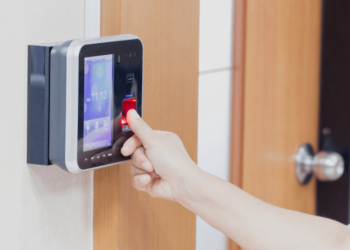As a business owner or marketer, do you struggle to keep up with consumer demands? If so, understanding the distinction between multichannel and omnichannel strategies is essential.
This article explores these approaches in depth, offering a roadmap to seamless, personalized experiences that foster loyalty and drive growth. Get ready to discover the secret ingredients for successful customer engagement.
The Shift in Consumer Expectations
Consumers demand a seamless and consistent experience across all touchpoints. According to Porch Group Media, 72% of online shoppers view the in-store experience as the most crucial channel during their purchase journey. This shift in expectations is driven by technological advancements and the increasing digitalization of our lives. Consumers now expect levels of convenience and personalization that transcend traditional boundaries.
They expect to begin their journey on one channel and continue seamlessly on another, without disruptions or disconnects. This has made an omnichannel approach a necessity for providing a unified customer journey. The rise of contact center enables businesses to deliver this seamless experience across multiple touchpoints, including physical stores, websites, mobile apps, and social media.
To meet these heightened expectations, businesses must adopt a customer-centric mindset and leverage the latest technologies to provide a truly integrated and personalized experience. By embracing an omnichannel strategy and investing in solutions like omnichannel contact center software, companies can ensure consistent and high-quality service, regardless of the channel customers choose to interact with.
Technological Advances Driving Change
The rise of artificial intelligence (AI), machine learning, and data analytics has ushered in a new era of customer interaction. These cutting-edge technologies are reshaping how businesses engage with customers across integrated retail channels.
For instance, AI-powered chatbots and virtual assistants, integrated into omnichannel customer support software, offer 24/7 assistance and personalized interactions. Conversely, data analytics tools deliver valuable insights into consumer behavior in omnichannel environments, helping businesses tailor their strategies effectively.
Companies like Amazon, which has successfully integrated advanced technologies into its customer experience, serve as prime examples of how these innovations can enhance cross-channel customer service.
Multichannel vs. Omnichannel
While both multichannel and omnichannel strategies aim to provide a consistent customer experience across multiple channels, there are fundamental differences between the two approaches.
Multichannel Retail
• Product-focused
• Separate technology, data, processes, and staff for each channel
• Wider reach and greater control, but siloed experiences
Omnichannel Retail
• Customer-focused
• Integrated digital and physical channels
• Unified customer experience across all touchpoints
• Cross-channel services like click & collect and online inventory look-up in-store
Multichannel strategies offer a broader reach but often lead to disjointed customer experiences since each channel operates independently. In contrast, omnichannel strategies prioritize a seamless and cohesive journey, allowing customers to move effortlessly between channels without disruptions.
Here’s a comparison table that highlights the key differences:
| Feature | Multichannel | Omnichannel |
| Focus | Product-centric | Customer-centric |
| Channel Integration | Separate channels | Integrated channels |
| Data Management | Siloed data | Unified data |
| Customer Experience | Disconnected | Seamless |
| Click & Collect | Limited | Supported |
| Inventory Visibility | Channel-specific | Cross-channel |
Omnichannel: The Future Standard?
As consumer behavior in omnichannel settings continues to evolve, there is a growing consensus that omnichannel strategies may become the predominant model for customer interactions. By integrating physical and digital channels, businesses can create a holistic customer journey that caters to individual preferences and expectations.
Omnichannel retail offers a range of benefits, including:
• Improved customer satisfaction and loyalty
• Enhanced brand consistency across all touchpoints
• Increased sales and customer lifetime value
• Better data insights and personalization opportunities
Companies like Whistles and Pets at Home have already reaped the rewards of embracing an omnichannel approach, experiencing record-breaking online sales and introducing innovative services like 1-hour click & collect.
Impact on Business Outcomes
The choice between a multichannel or an omnichannel strategy has far-reaching implications for key business metrics, including customer retention strategies, satisfaction, and lifetime value.
Multichannel Retail
• Provides wider reach and greater control, while lowering risk
• Can lead to siloed customer experiences and inconsistent brand messaging
Omnichannel Retail
• Offers a fantastic customer experience, driving loyalty and retention
• Enables better personalization and cross-selling opportunities
• Requires significant investment in technology and process integration
According to a study by Invesp, companies with strong omnichannel customer engagement strategies retain more of their customers, compared to the companies with weak omnichannel strategies.
Additionally, omnichannel shoppers have a 30% higher lifetime value than those who shop using only one channel.
Case Studies: Transitioning to Omnichannel
While the benefits of an omnichannel strategy are clear, the transition from a multichannel approach can be challenging. However, successful case studies provide valuable lessons and best practices for businesses looking to embark on this journey.
Whistles
Whistles, a UK-based fashion retailer, upgraded to an omnichannel order management system (OMS) to offer services like ship from store and click & collect. This move resulted in record-breaking online sales and improved customer satisfaction.
Pets at Home
By implementing omnichannel order management software, Pets at Home was able to introduce a 1-hour click & collect service, allowing customers to pick up their orders quickly and conveniently.
These case studies highlight the importance of investing in the right technology in omnichannel retail, such as omnichannelsoftware and order management systems, to support an omnichannel strategy. Additionally, they demonstrate the potential for improved customer experiences and business outcomes when executed successfully.
Future Trends in Customer Interaction
As businesses continue to adapt to evolving consumer behavior and technological advancements, several trends are expected to shape the future of customer interaction strategies:
• Personalized Messaging: Omnichannel customer support software will leverage advanced analytics and AI to deliver highly personalized and context-aware messaging across all channels, enhancing the customer journey omnichannel.
• Cohesive Experiences: Brands will focus on providing a smooth, cohesive experience across all channels, from in-store to online and mobile, blurring the lines between physical and digital.
• New Marketplaces and Sales Channels: Companies will need to adapt their strategies to accommodate new marketplaces, social media platforms, and emerging sales channels.
• Internet of Things (IoT) Integration: The integration of IoTdevices and wearables will further enhance the omnichannel experience, enabling real-time interactions and personalized services.
To remain competitive in this rapidly changing landscape, businesses must be prepared to adapt their customer interaction strategies and leverage the latest technologies, such as omnichannel call center software and technology in omnichannel retail.
FAQs
1. What are the key indicators that a business should switch from a multichannel to an omnichannelapproach?
There are several signs that may indicate it’s time for a business to transition to an omnichannel strategy:
• Increasing customer demand for consistent and seamless experiences across channels
• High customer churn rates or low satisfaction scores due to disjointed experiences
• Siloed data and processes that hinder effective customer engagement
• Inability to provide cross-channel services like click & collect or real-time inventory visibility
If a business is experiencing these challenges, it may be time to consider an omnichannel approach to better meet customer expectations and stay competitive.
2. How can small businesses adopt an omnichannelstrategy with limited resources?
Implementing an omnichannel strategy can be resource-intensive, but there are scalable solutions that can help small to mid-size enterprises get started:
• Leverage cloud-based omnichannel customer support software and order management systems, which offer flexible pricing and scalability options.
• Start by integrating your most popular channels first, such as your website, mobile app, and social media platforms.
• Invest in training your customer service team to provide consistent and seamless support across channels.
• Utilize data analytics tools to gain insights into consumer behavior in omnichannel settings, and make data-driven decisions.
Small businesses can gradually build their omnichannelcapabilities by prioritizing their most critical channels and investing in the right technologies and processes over time.
3. What are common pitfalls in implementing an omnichannel strategy, and how can they be avoided?
Some common pitfalls in implementing an omnichannel strategy include:
• Lack of leadership buy-in and alignment across the organization
• Siloed data and processes that hinder a seamless experience
• Inadequate investment in technologies like omnichannelsoftware and order management systems
• Insufficient training and change management for employee adoption
To avoid these, businesses should:
• Secure leadership commitment and clear goals
• Integrate data and processes across channels
• Invest in robust omnichannel technologies
• Provide comprehensive training and change management
Addressing these pitfalls proactively can increase the chances of successful omnichannel implementation.











































































